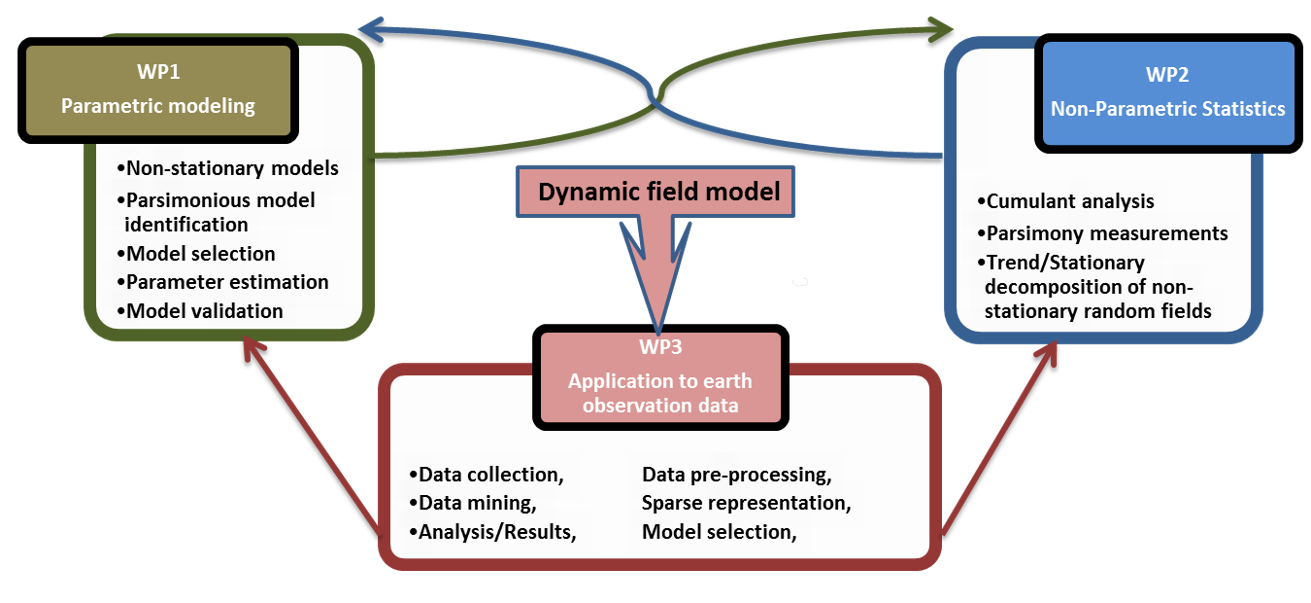PHOENIX: Parsimony, Huge Observations of Earth Non-stationarities from Images Time Series
[ANR Project on the
characterization of large-scale earth variables, 2015-2019, Reference ANR-15-CE23-0012]
The technical objective of the PHOENIX project is to provide resilience analysis from information modeling and retrieval in image time series of
Alpine glaciers and Amazonian forests.
This analysis will be performed through a general framework of random field time series, with two
work packages (WP)
dedicated to methodological developments.
The first package,
WP1, will address
parsimonious parametric modeling
of random field time series by using non-stationary fractionally differenced/integrated parameterizations.
The second package,
WP2,
is dedicated to
non-parametric methods
for the analysis of random field time series: cumulant analysis and trend/stationary decompositions are some important topics addressed in this WP.
The third package,
WP3, will focus on the application of WP1 and WP2 methods to 2 kinds of mono/multi-channel earth observation
satellite image time series:
1) Synthetic Aperture Radar images which cover large areas and are not significantly impacted by meteorological variability, 2) Spectro-Visible images which can observe specific areas with a higher spatio-spectral resolution.

Tasks involved in WP1, WP2 and WP3 are associated with 4 scientific workgroups: